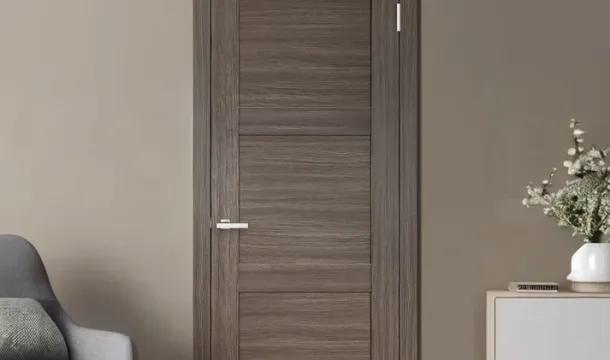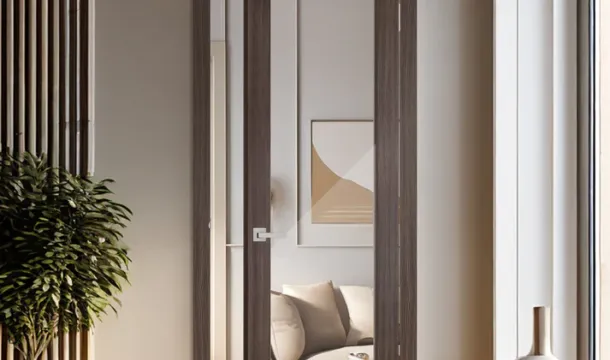How to Decide Between Refinishing or Replacing Interior Doors
Popular Articles
Opt for a surface makeover if your existing panels have solid construction and minor cosmetic flaws. Scratches, faded finishes, or outdated colors can be transformed effectively with sanding, staining, or paintingthis approach reduces waste and cuts renovation costs by up to 60% compared to purchasing new units. For solid wood models common in Canadian homes built before 1990, refinishing preserves character while enhancing durability.
Replacement becomes practical when structural damage is present or energy efficiency is a priority. Warped frames, cracked panels, and malfunctioning hardware often signal that restoration won't restore functionality. Modern alternatives offer improved insulation ratings (up to R-5), soundproofing benefits, and customizable designs aligning with current decor trends. Additionally, swapping doors can increase property value by creating cohesive aesthetics throughout the home.
Evaluate the scope of your renovation project carefully: prioritize preservation if sustainability and budget constraints lead your choices. Opt for full installation when performance upgrades or style updates are essential. Combining both methods room-by-room often yields balanced results without compromising on quality or design integrity.
Assess Door Material Condition
Inspect the core structure and surface integrity to determine if renovation is feasible. Solid wood panels with minor cracks or dents typically respond well to sanding and sealing, whereas extensive warping or rot compromises stability beyond repair. Hollow-core doors require particular attention to edge damage and internal cardboard deterioration, which often necessitates replacement.
Evaluate moisture exposure history; swollen or delaminated veneers indicate compromised layers that undermine refinishing results. Check for insect damage or fungal growth, especially in older installations, as these factors accelerate material degradation and reduce lifespan after treatment.
Surface Imperfections and Finish Quality
Identify existing finisheslacquer, varnish, paintand their condition. Multiple layers of peeling paint may require chemical stripping before any surface treatment can succeed. Deep gouges or missing veneer sections demand patching compounds or overlay options that might not justify renovation costs compared to new units.
Hardware and Frame Compatibility
Examine hinges, locks, and frames for alignment issues caused by settling or previous repairs. Warped frames can distort door operation even if the slab itself is intact. Confirm hardware compatibility with potential new finishes or replacements to avoid unnecessary modifications during the renovation process.
Compare Refinishing Costs
Renovation expenses for restoring existing doors typically range from $75 to $200 per door, depending on factors such as surface damage, finish type, and labor rates. This often includes sanding, staining or painting, and sealing. In contrast, acquiring new units can cost anywhere between $150 and $500 each, excluding installation fees.
Key cost components for renovation:
- Material Preparation: Sanding and filling imperfections usually require 13 hours per door.
- Finishing Supplies: High-quality stains or paints average $30$60 per gallon; one gallon covers 68 doors.
- Labor: Professional services charge approximately $50$100 per hour; DIY options reduce expenses but demand time and skill.
Replacement costs incorporate:
- Door Price: Hollow core models start near $150, solid wood or custom designs exceed $400.
- Hardware Upgrades: New hinges and handles can add $50$150 depending on style and quality.
- Installation: Skilled carpenters typically bill $100$200 per door for removal and fitting.
For projects involving multiple units, refinishing offers substantial savings by minimizing material waste and avoiding disposal fees. However, extensive structural damage or outdated styles may justify the higher initial investment of replacement due to longer-term durability and reduced maintenance demands.
Evaluate Replacement Benefits
Upgrading to new door units often delivers immediate advantages that enhance both function and aesthetics. Modern styles incorporate improved insulation and soundproofing technologies, reducing energy costs and increasing home comfort. For example, doors with solid cores or engineered composites outperform older hollow-core models in noise reduction by up to 50%.
New installations allow for customization tailored to current design trends or specific room requirements. Options such as frosted glass panels or sleek minimalist frames can transform the atmosphere without extensive renovation work. Additionally, many manufacturers offer pre-finished surfaces with durable coatings, eliminating the need for additional painting or staining.
Durability gains also justify replacement in spaces exposed to heavy use or moisture. Contemporary materials resist warping, cracking, and swelling more effectively than traditional wood species. This longevity minimizes maintenance frequency and related expenses over time.
Replacing hardware simultaneously is another benefitmodern hinges and locks provide smoother operation and enhanced security features. Upgrades like soft-close mechanisms prevent slamming, protecting door integrity and improving household safety.
Financially, while initial costs are higher than surface restoration, investment recoups through increased property value and reduced upkeep. Homeowners aiming for a comprehensive renovation often find that fresh doors align better with other updated elements such as flooring or trimwork, creating a cohesive result that refinishing alone rarely achieves.
Consider Time Investment Needed
Allocate at least 8 to 12 hours per door when opting for surface renewal, including sanding, priming, painting, and drying times. This duration can extend significantly if the door has intricate paneling or requires multiple coats.
In contrast, installing a new unit typically takes around 1 to 3 hours per door for an experienced installer, factoring in removal of the old frame and adjustments for fit. However, scheduling delivery and potential customization can add days or weeks to the overall renovation timeline.
Keep in mind that DIY restoration demands patience and workspace preparation. Dust containment during sanding and curing periods may disrupt daily routines for several days. Professional services can reduce hands-on time but increase costs.
When managing tight schedules or aiming for rapid transformation across multiple rooms, replacement often presents a more predictable timeframe. For gradual upgrades with budget constraints and flexible timing, refinishing offers control over pacing but requires sustained effort throughout the process.
Match Style and Design
Selecting a door that complements the existing decor is key to maintaining visual harmony during renovation. Analyze architectural elements such as trim, molding, and hardware styles before choosing whether to restore or install new panels. For homes with traditional or vintage interiors, doors featuring raised panels, intricate carvings, or glass inserts can preserve period authenticity.
Modern settings benefit from sleek, flat-panel doors with minimalistic hardware, which often justify replacement due to their distinct design language. Consider the door's finish tone in relation to flooring and wall colorsmismatched hues may require additional refinishing or repainting to achieve cohesion.
If the current door has unique custom details or artisan craftsmanship difficult to replicate, restoration preserves those character-rich features more effectively than substitution. Conversely, when aiming for a stylistic update aligned with contemporary trends or open-concept layouts, opting for new units designed specifically for such aesthetics streamlines the process and avoids costly modifications.
Keep in mind that door proportions impact spatial perception; oversized doors suit grand entryways but may overwhelm smaller rooms. Matching panel configuration and depth across all passageways contributes to uniformity throughout the home's interior architecture. Prioritize compatibility with existing trim profiles and consider how hardware finishes like matte black or brushed nickel interact with overall palette choices during renovation planning.
Popular Articles

Choosing the Perfect Interior Doors for Your Canadian Home

Soundproofing Interior Doors: Which Options Are Best for Your Home?
